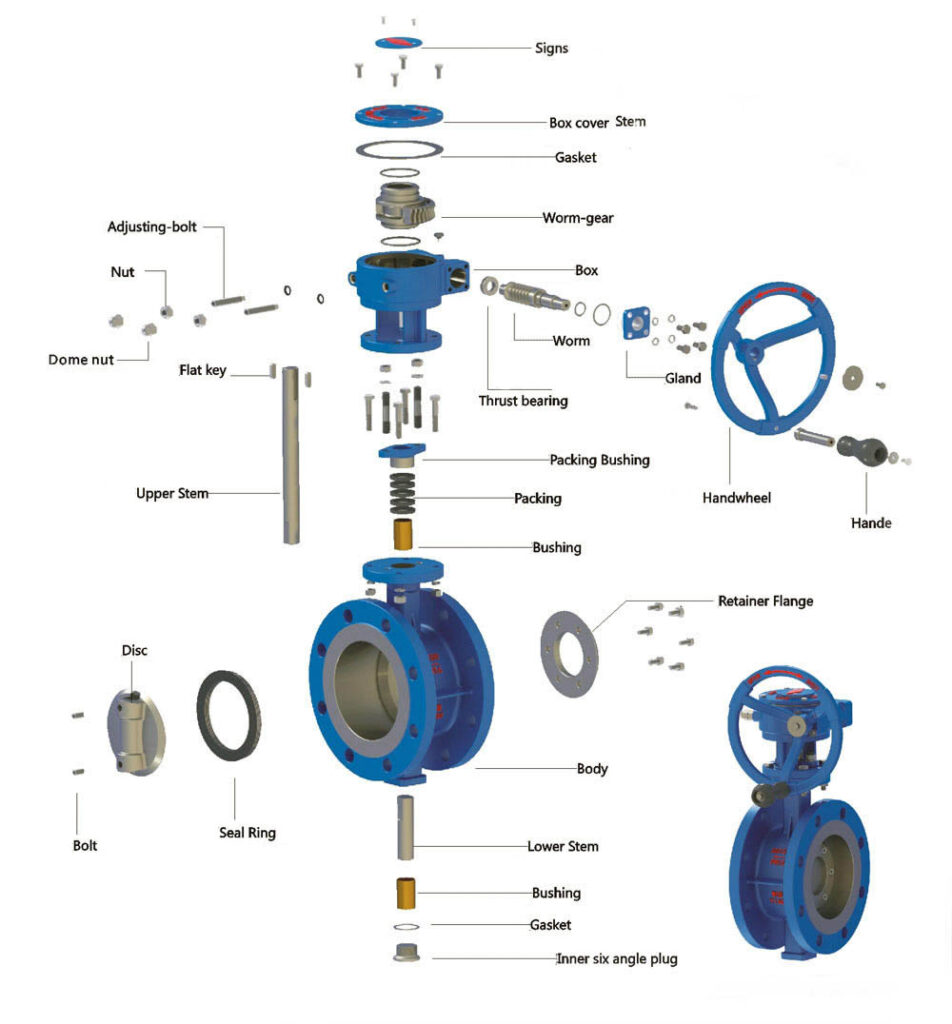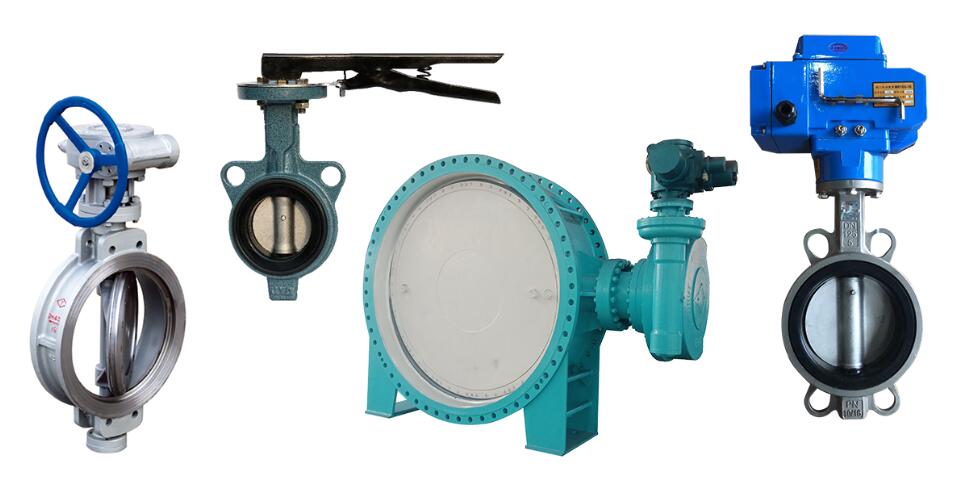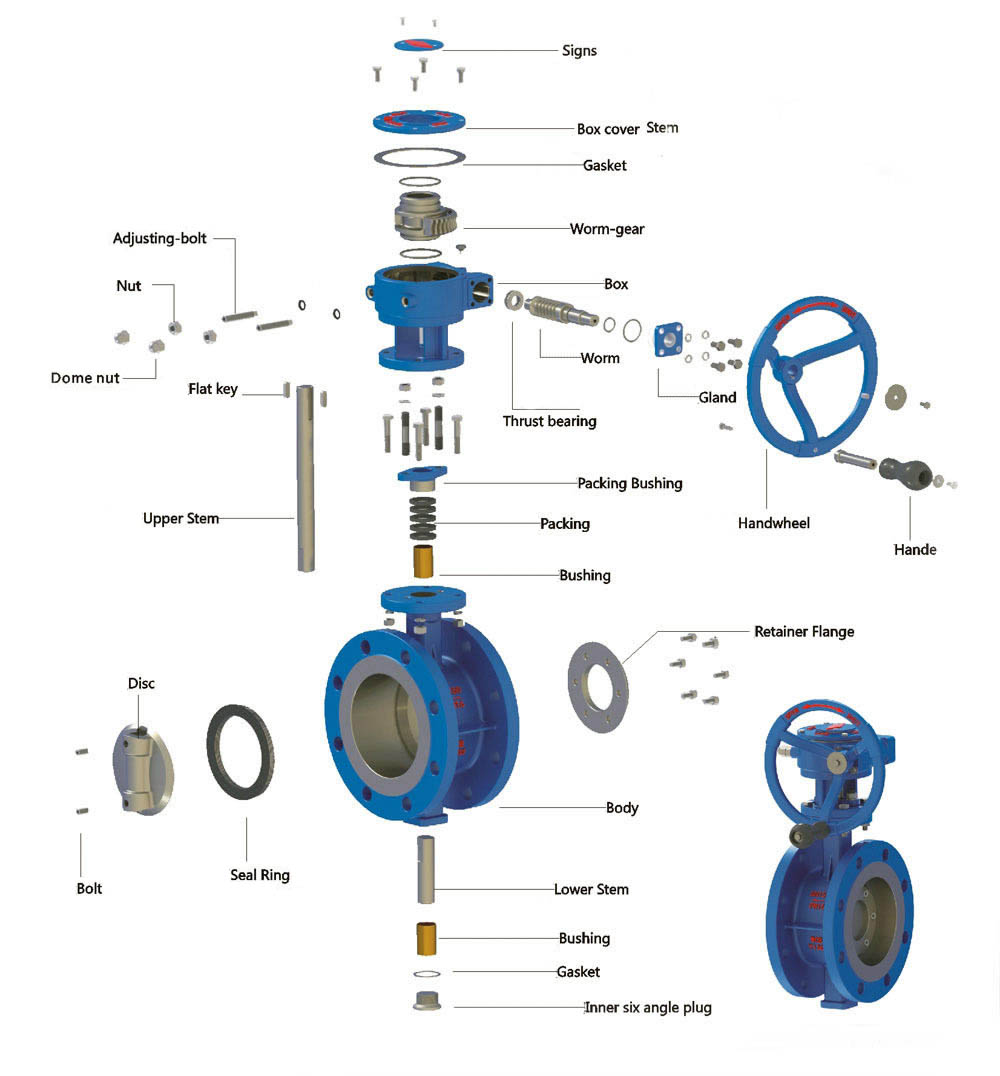Структура на дроселна клапа е тип четвърт оборотен вентил, който използва дисковиден затварящ елемент, дискът на пеперудата, за контролиране на потока на течността. Бътерфлай дискът е монтиран на вал и е разположен в центъра на тялото на клапана, който е тръба с кръгла или овална форма. Дискът се върти около вала, за да регулира потока на течността през клапана.
Основните части на структурата на клапана на пеперудите

Бътерфлай клапи са универсални и често се използват в индустриални приложения, където се изисква тесно изключване. Те се състоят от четири основни компонента на структурата: тялото на клапана, дискът на пеперудата, стъблото, и задвижването.
Корпуване на клапана на пеперуди
Корпусът на клапана е проектиран така, че да съответства на тръбната система и съдържа седалката, на която диск се запечатва, когато клапанът е затворен. Това е важно, защото гарантира, че клапанът осигурява плътно изключване, предотвратяване на нежелани течове или загуби в системата.
Диск на клапана на пеперуди
Дискът с пеперуди обикновено е изработен от лек материал, като алуминий, и е или концентрична или ексцентрична форма. Концентричният дизайн поставя диска в центъра на тялото на клапана, докато ексцентричната структура Дизайнът го поставя извън центъра. Изборът на дизайн зависи от конкретното приложение и желаните характеристики на потока.
Стъблото на клапана на пеперуди
Стъблото свързва задвижването с диска и позволява на диска да се върти. Обикновено се изработва от здрав материал като неръждаема стомана, за да издържи въртящия момент, необходим за работа с клапана.
Няколко различни вида задействане на клапана на пеперуди
Задвижването, които могат да бъдат ръчни или автоматични, се използва за работа с клапана и преместване на диска в желаното положение. Ръчните задействащи механизми се експлоатират на ръка, Докато автоматичните задвижващи механизми се задвижват от външен източник на захранване, като сгъстен въздух, електричество, или хидравлично налягане.

Клапата на пеперудите се предлагат в различни дизайни, включително Структура на вафли, структура на ухото, и Фланска структура конфигурации.
- Клапаните на пеперудите вафли са инсталирани между два фланца и се държат на място с болтове.
- Влошените клапани на пеперуди имат вложки с резба в края на тялото на клапана, които им позволяват да бъдат закрепени върху тръбната система.
- Фланчените клапани с пеперуди имат фланци в края на корпуса на клапана, които са закрепени върху тръбната система.
Всеки дизайн има свои предимства и недостатъци, И изборът на дизайн зависи от конкретното приложение и желаните изисквания за инсталиране и поддръжка.
Като цяло, Клапата на пеперудите са известни със своя прост дизайн, Лека строителна конструкция, и бърза работа. Те обикновено се използват в приложения, които изискват плътно изключване, като например в индустрията за химическа и хранителна преработка. Те също са полезни в приложения, при които е важен контролът на потока, Тъй като те осигуряват отлични възможности за дроселиране. С тяхната гъвкавост и лекота на използване, Клаповете на пеперудите са отличен избор за широк спектър от индустриални приложения.

